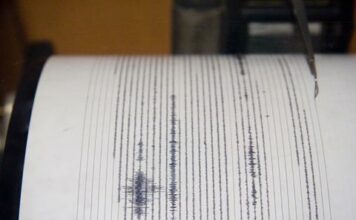Teachers at Gilroy’s 1-year-old charter school are “thrilled,” “proud” and “validated” after learning their second-grade students received the highest projected Academic Performance Index score for an elementary school in the history of the Gilroy Unified School District.
Now in the third grade, the group of second-grade GPS students who took the California Standardized Test last school year is expected to receive an API score somewhere between a 960 and 970. The highest possible score is 1,000.
“I don’t think I’ve ever been so fired up to work anywhere in my life,” said Heather Parsons, who teaches second- and third-grade math at Gilroy Prep Charter School, which opened in fall 2011 and is located at 277 IOOF Avenue.
California’s benchmark for the Academic Performance Index is 800.
Last year, Luigi Aprea was the highest-scoring GUSD elementary school with an API of 896, while the Dr. TJ Owens Early College Academy – a smaller high school located on the Gavilan College Campus – registered the highest API in the district at 926.
GPS is also the highest-peforming first-year charter out of 500 in the state of California since 2006, according to EdTech, a business and development support company for charter schools. The previous high score was 957.
“In my wildest dreams, I would not have set the goal as high as we did,” said GPS Principal and co-founder James Dent. “They out-performed anything I could have hoped from them.”
Districts receive raw test score data in late summer, which allows administrators to calculate their schools’ projected API scores prior to the official figures being released by the California Department of Education. The projected scores are usually calculated within one or two points of the official scores.
GPS, which does not have a teacher’s union, currently offers grades kindergarten through third grade, has a staff of 11 and will expand by tacking on another grade each year up to the eighth grade. GPS is open to all kindergarten students via enrollment lottery, although precedence is given to families already living in GUSD boundaries, or students who have an older sibling attending the school.
GPS parent Shannon Erb says moving her two daughters to GPS was “the best decision I’ve ever made for my kids.”
Erb’s oldest daughter, Delaney, 8, struggles with learning disabilities and was previously enrolled at a “very expensive” private school in Morgan Hill. Delaney was also receiving private after-school tutoring.
When Erb learned of GPS’s teaching model, which is set up to operate in a format that caters to individual learning paces and needs, “that’s when I knew I would have to try it,” she said.
The leap of “faith” paid off.
“She has done amazing,” said Erb, of Delaney. “We all cried when we saw her test scores. I could not be more pleased. We saw a 100 percent turnaround after she came to GPS.”
At the beginning of the 2011 school year, 67 percent of GPS students came from low-income households or were classified as ELL (English Language Learners). A quarter of GPS’s second-graders were reading at a kindergarten level.
“They were an average group,” said Dent, quashing rumors that GPS “cherry-picked” or recruited high performing students when the school first opened.
Additionally, if a parent is willing to enroll their child in a charter school, it’s likely that a parent is “more aware and more involved from the beginning,” Dent added. “And that’s one of the biggest factors in achievement.”
In 2011, at least 25 percent of second-grade GPS students were at a learning level that would have merited repeating the first grade, Dent said. About 40 percent of GPS’s second-graders arrived at an average, or below average competency level.
Whereas motivating kids to get excited about reading was like “pulling teeth,” language arts teacher Crystal Toriumi said the school’s Accelerated Reader software turned her students into bookworms.
“By the end of the year, I couldn’t take their books away from them,” said Toriumi, who views her career at GPS as a “trailblazing” adventure in education.
As for special-ed students, GPS has a full inclusion program, meaning they are not separated from the mainstream classroom. Test scores for those students were factored into the overall calculation of GPS’s projected API.
Since GPS reached its goal of breaking the 900 API barrier, teachers will receive flat bonuses of $2,500 each – a perk not offered at other GUSD schools. Students will go on a trip to Six Flags Marine World in Vallejo.
“They screamed so loud in that room that my eardrums were rattling,” said Dent, recalling the explosion of excitement when teachers told students they had reached their API goal.
Students and teachers aren’t the only ones getting amped.
GPS parents including Dawn Johnson appreciate the charter’s reactive learning environment, which gives teachers the freedom to adapt to students’ learning needs and adjust accordingly by offering tiered instruction based on ability.
Johnson’s oldest child is a “self starter” who excels when allowed to work at her own pace, while Johnson’s 7-year-old son, Dylan, made tremendous strides since switching to GPS from his previous school in Morgan Hill.
“It was just amazing to see his confidence grow,” said Johnson. “They don’t teach just all 30 kids at once. They understand which kids are struggling and break them up into smaller groups. They work with kids who need more work, and kids who excel can move ahead faster.”
Unlike other Gilroy schools, which release students between 2:15 p.m. and 2:35 p.m., students at GPS can be in school until 4 p.m. Many also come in early on a volunteer basis with their parents, who bring their children around 7:30 a.m. to use the computer lab. Improvement is also tracked through monthly progress reports sent home to parents. Whereas having the same teacher all year long “leads to a little bit of stagnation,” Dent explained that students begin the day with a homeroom teacher but migrate to math, reading, computer, music, art and dance classes. Some GPS students work with up to six different adults daily in groups with ratios ranging from 2:1 to 30:1.
This type of “clear checking for understanding” goes a long way, according to school board Trustee Pat Midtgaard, a former GUSD teacher and principal who observed GPS classes in action. A conscious effort to leave zero “downtime” in between lessons – kids and teachers engage constantly in a cadent chorus of questions and unison responses – are the kinds of “good teaching practices we know make a difference,” Midtgaard noted.
“I sensed that students knew exactly what was going on, and why they were doing it,” she continued. “I think it’s good for the GUSD board to know that perhaps we have some early signs of a step in the right direction.”
GPS teacher Heather Parson highlights the schools’ constant “tremendous amount of adjustment;” along with “no wasted instructional minutes;” single subject instruction; and a game-like element that breaks students into opposing groups and motivates them to compete for points through learning.
Success at their own school site, for that matter, is but a fraction of the overarching mission.
Dent and his teachers underline their big-picture goal, which is to lower the achievement gap not just in Gilroy, but to be a microcosm that spreads effective learning models to benefit teachers, the district and ultimately neighboring cities such as Salinas, Watsonville and Marina. The GPS school board is currently laying the foundation to start a new charter school in Hollister.
After that, the sky is the limit.
With a “cross section” of Gilroy students that represents a mix of high-achievers and children who once performed at below-average competency levels, “it just goes to show that you can get this level of performance anywhere in the state,” said Dent. “But you have to innovate and change the way you do education, or else you’re going to have stagnancy.”












